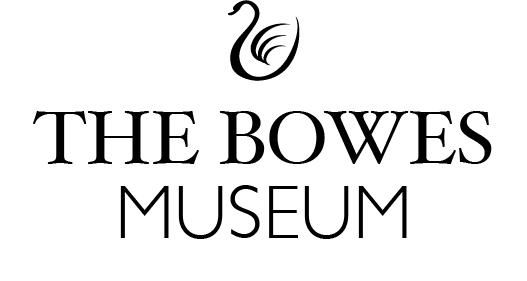
Portrait of Juan Antonio Meléndez Valdés
Juan Antonio Meléndez Valdés (1754–1817) was a distinguished member of the Enlightenment circle of Spanish thinkers who felt responsibility towards the society in which they lived. After graduating in Law at Salamanca, he was appointed to a professorship there in 1783. At the same time, he distinguished himself as a poet. In 1780 he won first prize from the Academy of Fine Arts for his eclogue Batilo, and he published a first edition of his poetry in 1785. Four years later, he became a judge in Zaragoza, and two years after that he obtained a post at the Royal Chancellery in Valladolid. In his writings on the penal system, published posthumously in 1821 as Discursos forenses (Legal Discourses), Mélendez Valdés argued strongly for reform, advocating respect and humanity in the treatment of criminals. He believed that ‘any punishment, greater than the offense committed […] is a tyranny, a violation, a useless barbarity, instead of a just and healthy indemnity’. Such views resonate with Goya’s interests in revealing the harsh conditions and violent treatment faced by prisoners, as is the case with Interior of a Prison, also at The Bowes Museum (see ‘Suffering and Pain’, 1).
In this intimate portrait, Meléndez Valdés is seen half-length, turned to the left, wearing a dark red coat and a white shirt, against a plain, dark background. The portrait places emphasis on the sitter’s expression, capturing his intelligence. He is looking seriously and intently at the viewer, lips slightly parted as if about to speak. The portrait dates from 1797. In October that year he was appointed Royal Public Prosecutor (Fiscal de la Sala de Alcades de Casa y Corte), but he quickly fell from grace and was banished in 1798 to Medina del Campo. During the French invasion of Spain (1808–14), he cooperated with the French regime under Joseph Bonaparte. After the restoration of the Spanish monarchy, he went into exile to Montpellier in southern France, where he died in 1817.
When Goya painted his friend’s portrait, he was already a well-established artist in Madrid and a chamber painter to King Charles IV. Two years later, he was promoted to the position of First Painter to the King, the highest rank an artist could achieve at court. Today, Goya is regarded as a pivotal figure in European art and is often referred to as the last of the old masters and the first modern artist. His work is wide-ranging. It includes portraits of the most eminent figures of Spanish society, religious paintings, controversial depictions of the nude, social satires, bullfighting scenes, images of outcasts, and imaginary scenes that defy interpretation. His depictions of the horrors of the Peninsular War (1808–14) prefigure wartime endeavours in photojournalism. His art has inspired many later artists, including Eugène Delacroix (1798–1863), Édouard Manet (1832–83), Pablo Picasso (1881–1973), Salvador Dalí (1904–89), Sigmar Polke (1941–2010), and the Chapman Brothers (b. 1962).
 Click to zoom and pan
Click to zoom and pan
...
Your feedback is very important to us. Would you like to tell us why?
We will never display your feedback on site - this information is used for research purposes.
Artwork Details
Title
Portrait of Juan Antonio Meléndez Valdés.
Artist
Francisco José de Goya y Lucientes (Fuendetodos, Aragon, 1746 – Bordeaux, France, 1828).
Date
1797.
Medium and Support
Oil on canvas.
Dimensions
73.3 x 57.1 cm.
Marks and Inscriptions
‘Meléndez Valdés su amigo Goya’ (‘Meléndez Valdés his friend Goya’).
Acquisition Details
Bequeathed by John and Joséphine Bowes in 1885.
Previous Owners
Francisco Azebal y Arratia; Conde de Quinto (cat. 45); John and Joséphine Bowes by 1862.
Institution
The Bowes Museum, Barnard Castle, B.M.69.
Bibliography
Enriqueta Harris, ‘Spanish Pictures from the Bowes Museum’, Burlington Magazine, 95 (1953, no. 598): 22–25;
Georges Demerson, Juan Meléndez Valdés y su tiempo: 1754–1817, 2 vols (Madrid: Taurus, 1971), I, p. 336;
Eric Young, Catalogue of Spanish Paintings in the Bowes Museum, 2nd ed. (Middlesborough: The Bowes Museum, 1988), pp. 74–77;
Alfonso E. Pérez Sánchez & Eleanor A. Sayre, ed., Goya and the Spirit of Enlightenment (Boston: Museum of Fine Arts, 1989), pp. 55–58 (no. 24);
Véronique Gerard Powell, ‘Spanish Paintings in the Bowes Museum’, in Spanish Art in County Durham, ed. Claire Baron & Andy Beresford (Bishop Auckland: Auckland Castle Trust, The Bowes Museum, & Durham University, 2014), p. 91.
